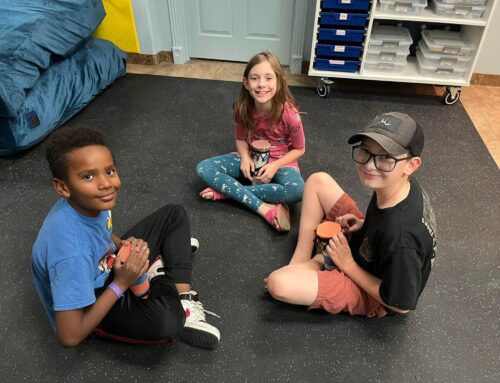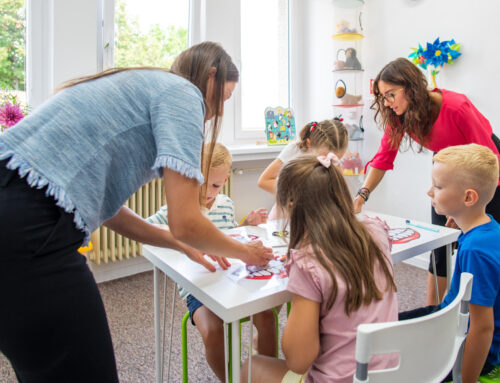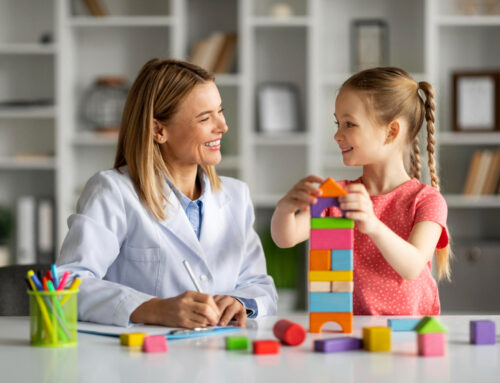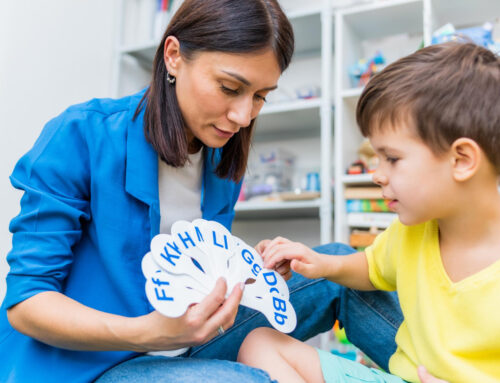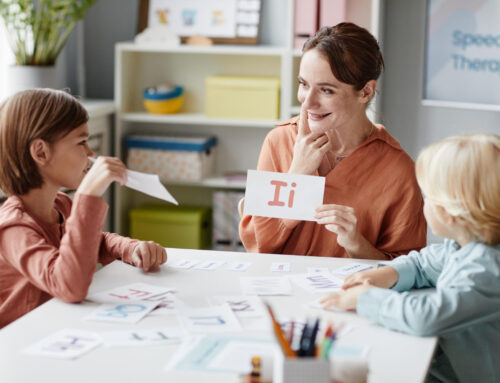Before your imagination runs wild, keep in mind that the term “mindfulness” is not a dismissive practice used by hipsters among the adult population. Mindfulness has become a well-respected practice used by many skilled professionals (i.e. occupational therapists, social workers, psychologists, etc.) as well as laypeople and caregivers. Mindfulness can be defined as the following, according to a Psychology Today article:
- Returning to the present moment
- Letting go of taking things for granted
- Self-regulation of attention with an attitude of curiosity, openness, and acceptance. (Niemiec, 2017)
Another relevant definition also can include:
“Mindfulness is the basic human ability to be fully present, aware of where we are and what we’re doing, and not overly reactive or overwhelmed by what’s going on around us.” (Mindfulness Staff, 2014).
In a more functional description, applying mindfulness to daily activities looks like purposefully slowing down in order to mind and to experience things for everything they are. For example, mindfully eating a raisin would include appreciating everything about the activity with all senses: what does the raisin smell like, look like, feel like between the fingers and on the tongue, sound like when being chewed, etc.
Mindfulness is used to pull ourselves out of the automatic mindset, so instead of doing our day-to-day tasks mindlessly (which is easy to do for repetitive activities such as eating, showering, toileting, performing work-related tasks, etc.), we thoughtfully consider all of the elements that go into one or all of these tasks.
So, why should we even use mindfulness? What health benefits does it address? According to Davis and Hayes (2012), mindfulness can provide individuals with the following: increased focused, enhanced working memory, decreased stress, reduced rumination (or reduced deep thought that can lead to unhealthy and persistent distress), increased emotional regulation, improved satisfaction in relationships, and increased cognitive flexibility.
Mindfulness can be inadvertently advertised to the general population as a technique used solely by adults. In fact, mindfulness has become well-researched in its uses and benefits among children. Although adults experience daily problems that can stress and other jabs to their mental health, children are just as susceptible to mental and emotional strain. Depend on what a child is going through, he or she can experience stress, anxiety, irregular emotional issues, and depressive symptoms that hinder their ability to perform activities that are most meaningful to them (forming friendships, completing homework, participating in sports and other extra-curricular activities, playing in their free time, etc.).
David Gelles is an author who has practiced mindfulness for the last 20 years. He published an article with the New York Times regarding mindfulness and children. Aside from providing some fantastic resources and insight about using mindfulness with children, he proposes that mindfulness techniques can be used with children as young as infancy. Of course, little babies are not going to be able to participate in mindfulness strategies on their own because they lack developed movement and language skills. Mindfulness in infancy is only effective when parents and/or caregivers actively use mindfulness techniques themselves which then can be shared with the baby. Examples include:
- Putting away all distractions (i.e. phones) in order to fully engage with the baby. This means making consistent eye contact, making faces, talking to your baby, or any other communication forms that mean that you are connecting with the child.
- Practicing a sense of calm when your child is distressed (dirty diaper, gassy, hungry, sleepy, hurting, etc.)
- Finding ways to move and to meditate during the baby’s down time or when the baby does not require your immediate and consistent attention.
Mindfulness is very beneficial for children across the lifespan, but can only be effective if someone is willing to embody and to guide them in practicing the techniques. Sift through the following references at the end of this article and study additional material in your free time. Consult with a doctor or other healthcare professional about how to learn mindfulness and how to apply it in your home.
References
Davis, D., M. & Hayes, J.A. (2012). What are the benefits of Mindfulness. American Psychology Association, 43(7), p. 64. https://www.apa.org/monitor/2012/07-08/ce-corner.aspx. Viewed on Jan. 2, 2019.
Gelles, D. (n.d.). Mindfulness for Children. New York Times. https://www.nytimes.com/guides/well/mindfulness-for-children. Viewed on Jan. 2, 2019.
Mindful Staff (2014). What is Mindfulness? Mindful. https://www.mindful.org/what-is-mindfulness/. Viewed on Dec. 31, 2018.
Niemiec, R.M. (2017). 3 Definitions of Mindfulness that might Surprise You: Getting at the Heart of What Mindfulness Is. Psychology Today. https://www.psychologytoday.com/us/blog/what-matters-most/201711/3-definitions-mindfulness-might-surprise-you. Viewed on Dec. 31, 2018.

